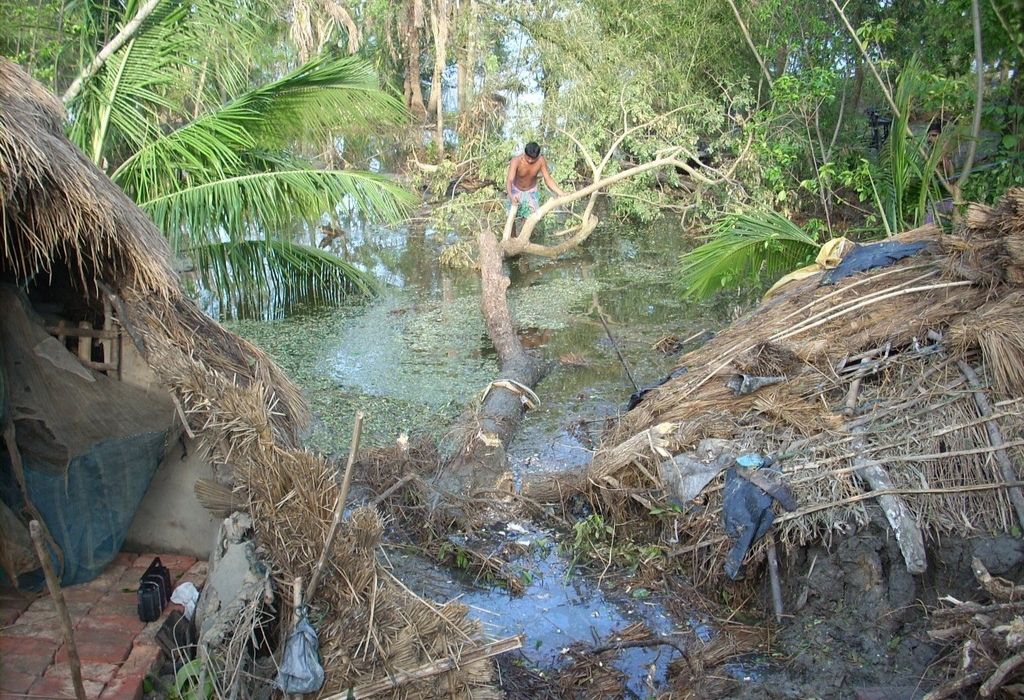As the COVID-19 pandemic unfolds, the dominant narrative in the climate change space is ‘nature is healing’. This narrative has emerged from the decrease in air pollution across hotspots and other climate wins. While it is important to highlight this, as it demonstrates the impact of human activity on nature, it also leaves out key considerations about how economies will recover and the impact of the pandemic on communities already coping with climate change. It is possible that the financial impact from COVID-19 will, in the longer-term, leave millions more vulnerable to climate change.
Will climate change take a backseat during and after COVID-19?
As governments in India and across the world focus on responding to COVID-19, it is likely that climate change will be seen as a less relevant issue for the next few years. Governments may experience governance fatigue, which will reduce the political will and bandwidth to commit to climate action, and they may instead focus efforts on recovering economies by any means possible. As per the United Nations’ Emission Gaps Report, we have already fallen behind the 2030 target to contain global warming to an increase of 1.5 degrees Celsius and bring down global emissions. COVID-19 will pull us further back. The United Nations Climate Change Conference, which was scheduled for November 2020, has also been postponed to 2021, delaying action at higher levels of government.
Related article: Human well-being depends on that of the planet
The pandemic has hit the Indian economy hard, and it is predicted that the economy will contract by 5 percent in 2020-21. Millions are already grappling with the effects of the nationwide lockdown, as seen in the case of stranded migrant workers, the informal workforce, and Indian farmers. Given the urgent need to revive the economy, there is pressure on the government to lower environmental standards and reduce monitoring requirements.
Historically, disasters have often led to more extractive manufacturing booms, reversing any climate gains. For developing nations such as India, focussing on manufacturing and extractive industries to recover the economy might be a low-hanging fruit, especially given the global fall in oil and coal prices. This could be seen as the only way to prevent the doubling of poverty due to COVID-19, as is anticipated.
The need for a ‘green’ recovery
The recovery process that countries choose post-COVID-19 will determine how successful we are in keeping climate action and ambitions on track. A few countries, such as those in the European Union, are planning for a green recovery, or ‘building back better’, by being conscious of the climate in their COVID-19 recovery plans. Such a green recovery would be hinged upon clean or less polluting technologies, electric mobility and transport, and smart infrastructure as part of a longer-term stimulus for financial growth.
There is an urgent need for central and state governments to think ‘green’ for the recovery of the economy post-COVID-19.
However, in India, where an INR 20 lakh crore stimulus plan has been announced, it is not clear whether climate change will be taken into consideration, as the package barely provides social protection to the country’s population of 1.3 billion. There is an urgent need for central and state governments to think ‘green’ for the recovery of the economy post-COVID-19. Here are some ways in which this can be done:
With every rupee that is pumped into the recovery process, the central and state governments need to consider whether they are doing more long-term harm than short-term good. If a fiscal stimulus is needed in heavily polluting industries, the scope of mitigation measures and use of clean technology must be evaluated. Policy makers need to mainstream climate decisions into their fiscal decisions, and interrogate past decisions through a climate lens. For instance, can certain polluting and emission-intensive industries be taxed at a higher rate in order to create a larger corpus for social protection measures?

It is possible that the financial impact from COVID-19 will, in the longer-term, leave millions more vulnerable to climate change. | Picture courtesy: Anil Mistry/Flickr
As the government plans bailouts for industries—such as aviation and automobile—that have taken a hit due to COVID-19, there is an opportunity to think beyond the status quo and provide mitigation measures while stimulating these sectors. For example, we could leapfrog to cleaner mobility options and electric vehicles, by providing tax breaks for electric vehicle production and infrastructure deployment, in line with the National Electric Mobility Mission Plan 2020. Tax breaks at the consumer level to popularise these vehicles as opposed to polluting alternatives could also be a way forward.
The lockdown has enabled new behaviours and habits to emerge, especially among the corporate workforce, with remote working becoming normalised. Consumption patterns are also changing, with more focus on buying what is locally and easily available. Institutionalising these changes after the lockdown is eased or lifted can go a long way in lowering vehicular emissions, reducing air travel, and reducing the carbon footprint of both people and products.
However, for these micro-changes and habits to transition into norms, governments and policy experts need to understand how to nudge individuals and corporates towards them. The lockdown is a good opportunity to help people break out of their inertia when it comes to reducing their carbon footprint.
The impact of COVID-19 on existing climate vulnerability
With economies and individuals under varying degrees of lockdown, air pollution and carbon emissions have declined globally. According to an International Energy Agency forecast, carbon dioxide emissions could fall by 8 percent in 2020. While this is good news and has important learnings for leaders, these changes are not permanent. The financial crisis of 2009, which saw a similar decease in emissions, also saw an increase of roughly 6 percent once the economy picked up.
Related article: Climate change, disasters, and what philanthropy can do
In reality, the COVID-19 crisis will add to the climate crisis that many communities are already facing. The World Bank estimates that COVID-19 could push 49 million people into extreme poverty by the end of 2020—a majority of them in the climate-sensitive and vulnerable regions of Asia and Sub-Saharan Africa. Additionally, a decrease in carbon emissions will not stop the impact of climate change or natural shocks and stressors. In May 2020, we have already seen the devastation caused by Cyclone Amphan in West Bengal and Odisha and the locust attacks on standing crops in North India.
Failing to act on issues such as climate change and public health cuts into any development gains made in other sectors.
Cyclone Amphan has severely affected the climate-sensitive and biodiversity-rich Sunderbans, a cluster of low-lying islands in the Bay of Bengal. The 4.5 million people who live in the Sunderbans have battled climate change for decades: Rising sea-levels have swallowed up their land and salinisation has made the land unfit for cultivation. As a result of the lockdown, people have lost daily wages for more than two months, and any financial safety net they might have had to build back what was lost in the cyclone has been completely erased. COVID-19 has exacerbated their already existing climate vulnerability and reduced their coping capacity.
The ongoing pandemic has made it painfully clear that failing to act on issues such as climate change and public health cuts into any development gains made in other sectors. Given the oncoming monsoons, the growing number of COVID-19 cases, and the extent to which COVID-19 has further compromised the ability of communities to cope with climate shocks, the government must factor in climate change in every decision related to the pandemic.
—
Know more
- Read findings from a study by Oxford University that highlights how climate-friendly policies for recovery post-COVID-19 will boost the economy as well.
- Learn about the direct and indirect effects of COVID-19 on the environment, including negative effects such as a reduction in recycling and increase in waste.
- Check out Green Humour, which uses art and cartoons as a medium to highlight critical insights on issues related to the environment and its governance in India
- Explore the podcast series ‘Climate emergency’ by Suno India that discusses the growing impacts of climate change on communities across India, and highlights the work of climate champions.
Do more
- Check out the international movement for ecological justice, Extinction Rebellion, to learn more about climate action and join the movement.
- Connect with the author at [email protected] if you’d like to learn more about their work.




